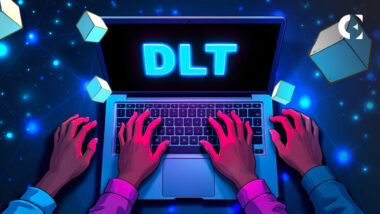The Rise of DLT: Technology Powering Decentralized Systems

A distributed ledger technology (DLT) is a database that every member of a network can read and help update. Unlike a traditional database, it has no central server. Each participant, called a node, stores a copy of the ledger. When someone wants to add a new entry, the nodes connect via peer‑to‑peer (P2P) protocol and run a consensus algorithm to decide if the entry is valid. Only when most nodes agree does the ledger accept the change. This constant cross‑checking prevents double‑spending and fraud, as it is of a decentralized nature.
Table of contents
Why Peer-to-Peer Matters
Central databases are easy targets. If one server fails or one admin causes damage, years of records can vanish or need to be rewritten. In a P2P design, it is not possible as no single machine can spoil the whole network. Each node stores at least the part of the ledger it needs. While “full nodes” keep everything from day one, “light clients” keep only headers or recent data. This flexible storage is why DLT scales from tiny sensor networks to systems…
The post The Rise of DLT: Technology Powering Decentralized Systems appeared first on Coin Edition.
Read More

Vincent Mazzotta Admits $13M Crypto Ponzi – But Did His Fake ‘Federal Reserve’ Fool Regulators?
The Rise of DLT: Technology Powering Decentralized Systems

A distributed ledger technology (DLT) is a database that every member of a network can read and help update. Unlike a traditional database, it has no central server. Each participant, called a node, stores a copy of the ledger. When someone wants to add a new entry, the nodes connect via peer‑to‑peer (P2P) protocol and run a consensus algorithm to decide if the entry is valid. Only when most nodes agree does the ledger accept the change. This constant cross‑checking prevents double‑spending and fraud, as it is of a decentralized nature.
Table of contents
Why Peer-to-Peer Matters
Central databases are easy targets. If one server fails or one admin causes damage, years of records can vanish or need to be rewritten. In a P2P design, it is not possible as no single machine can spoil the whole network. Each node stores at least the part of the ledger it needs. While “full nodes” keep everything from day one, “light clients” keep only headers or recent data. This flexible storage is why DLT scales from tiny sensor networks to systems…
The post The Rise of DLT: Technology Powering Decentralized Systems appeared first on Coin Edition.
Read More

